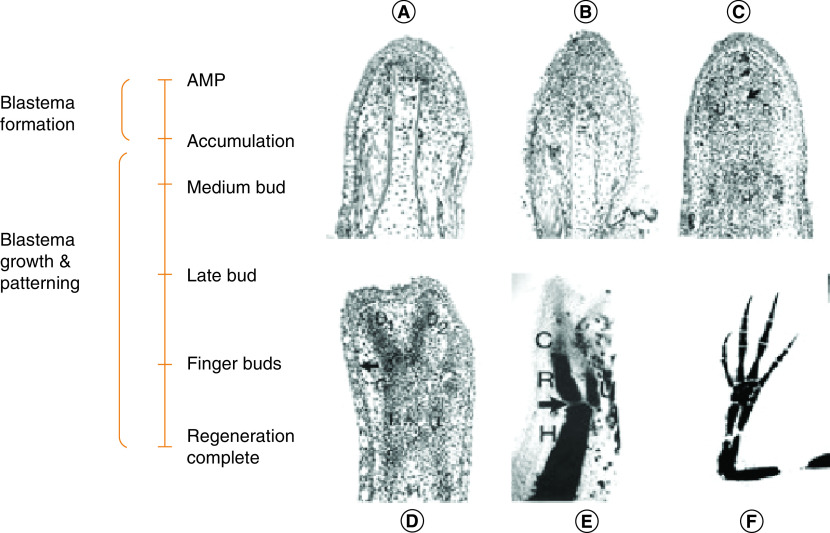Figure 2. . Blastema formation.
Longitudinal sections of phases observed in forelimb regeneration in a urodele larva (Ambystoma maculatum) after amputation (AMP) through the mid-stylopodium of the forelimb. (A) First phase – accumulation blastema or early bud formation by a collection of undifferentiated progenitor cells; (B) second phase – medium bud formation; (C) third phase – late bud formation with an arrow pointing to a blood vessel and prominent apical ectodermal ridge; (D) fourth phase – notch displaying anlagen of anterior two digits (D1, D2), distal humerus, and R and U. The arrow indicates re-forming of a basement membrane. (E) Fifth phase – two-fingerbud whole mount stained with methylene blue showing the H, R, U and C. The arrow points to the elbow joint. (F) Fully regenerated limb mount stained with methylene blue.
Adapted with permission from [12] under the terms of the Creative Commons Attribution License (CC-BY).
AMP: Amputation; C: Carpal region; H: Humerus; R: Radius; U: Ulna.

